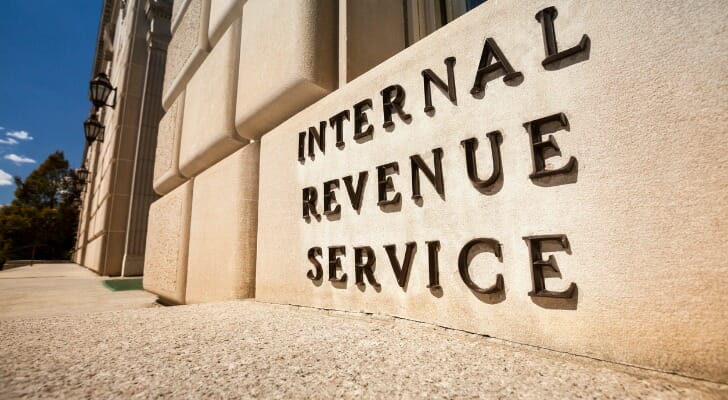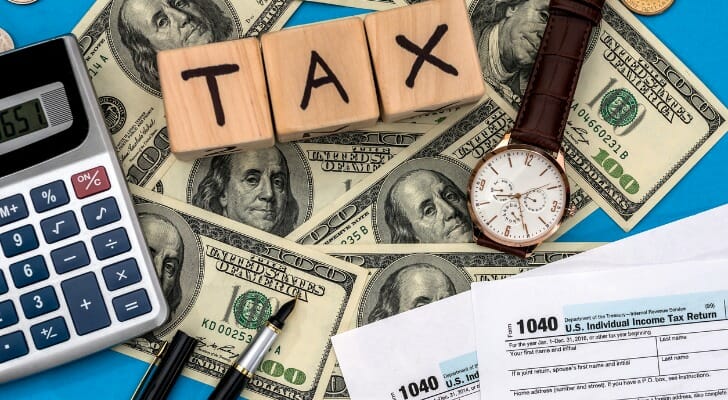Capital gains tax generally applies when you sell an investment or asset for more than you paid for it. In other words, any profits resulting from the sale are considered taxable in the eyes of the Internal Revenue Service. Whether you pay the short-term or long-term capital gains tax depends on how long you hold the investment before selling it. Short-term capital gains are subject to ordinary income tax rates, which are set by law and overseen by the IRS.
Do you have questions about tax planning? Speak with a financial advisor who serves your area today.
What Is Short-Term Capital Gains Tax?
The short-term capital gains tax is a tax on the profits of a sale of assets held for one year or less. It typically applies to stocks, mutual funds and other securities, but can also apply to other personal property like real estate, vehicles or collectibles, depending on how the asset is used.
For example, say you buy a rare comic book and resell it six months later for a $5,000 profit. Since you held the comic book for less than a year, the IRS would treat the gain as short-term and tax it at your ordinary income tax rate.
Similarly, if you occasionally sell collectible art pieces shortly after acquiring them, any gains would also be taxed as short-term capital gains, unless done regularly, in which case the IRS may classify it as business income.
How Short-Term Capital Gains Are Taxed
Short-term capital gains apply to assets sold after being held for one year or less. The gain is calculated by subtracting your cost basis from the sale price, then netting that amount against any capital losses, including losses carried forward from previous years.
If the result is a net gain, it is taxed as ordinary income based on your federal tax bracket, which ranges from 10% to 37%.
Short-Term Capital Gains Tax Rates for 2026

The IRS uses ordinary income tax rates to tax capital gains. That means the tax on any investments you sell on a short-term basis would be determined by your tax bracket. Your tax bracket is based on your income and filing status.
Here are the short-term capital gains tax rates for income earned in 2026, compared by filing status:
| Rate | Single | Married Filing Jointly | Married Filing Separately | Head of Household |
|---|---|---|---|---|
| 10% | $0 – $12,400 | $0 – $24,800 | $0 – $12,400 | $0 – $17,700 |
| 12% | $12,400 – $50,400 | $24,800 – $100,800 | $12,400 – $50,400 | $17,700 – $67,450 |
| 22% | $50,400 – $105,700 | $100,800 – $211,400 | $50,400 – $105,700 | $67,450 – $105,700 |
| 24% | $105,700 – $201,775 | $211,400 – $403,550 | $105,700 – $201,775 | $105,700 – $201,775 |
| 32% | $201,775 – $256,225 | $403,550 – $512,450 | $201,775 – $256,225 | $201,775 – $256,200 |
| 35% | $256,225 – $640,600 | $512,450 – $768,700 | $256,225 – $384,350 | $256,200 – $640,600 |
| 37% | $640,600+ | $768,700+ | $384,350+ | $640,600+ |
And here are the income tax rates for tax year 2025:
| Rate | Single | Married Filing Jointly | Married Filing Separately | Head of Household |
|---|---|---|---|---|
| 10% | $0 – $11,925 | $0 – $23,850 | $0 – $11,925 | $0 – $17,000 |
| 12% | $11,925 – $48,475 | $23,850 – $96,950 | $11,925 – $48,475 | $17,000 – $64,850 |
| 22% | $48,475 – $103,350 | $96,950 – $206,700 | $48,475 – $103,350 | $64,850 – $103,350 |
| 24% | $103,350 – $197,300 | $206,700 – $394,600 | $103,350 – $197,300 | $103,350 – $197,300 |
| 32% | $197,300 – $250,525 | $394,600 – $501,050 | $197,300 – $250,525 | $197,300 – $250,500 |
| 35% | $250,525 – $626,350 | $501,050 – $751,600 | $250,525 – $375,800 | $250,500 – $626,350 |
| 37% | $626,350+ | $751,600+ | $375,800+ | $626,350+ |
Any net short-term gains you realize are included with your other sources of income for the year for tax purposes. So if you have $20,000 in short-term gains and earn $100,000 in salary from your day job, the IRS considers your total gross income to be $120,000.
It’s important to remember that the U.S. uses a progressive tax system. This means that the same ordinary income tax rate may not apply to your total income for the year if it includes short-term capital gains. If you have earned income from working as well as short-term capital gains from the sale of investments, it’s possible that multiple tax rates could be applied to determine what you owe.
In addition to federal short-term capital gains tax, you may also pay taxes on capital gains at the state level. Where you live can determine if you’re subject to short-term capital gains tax and whether you’ll pay a rate that’s equivalent to your ordinary income tax rate or below it.
Short-Term vs. Long-Term Capital Gains Taxes
The long-term capital gains tax rate applies to investments that you sell for a profit after holding them for longer than one year. Between the short-term and long-term capital gains tax rates, the long-term rate is more favorable to investors. That’s because it’s not tied to your ordinary income tax bracket.
Here’s what the long-term capital gains tax rates for 2026 look like:
| Tax Rate | Individuals | Married Filing Jointly | Head of Household | Married Filing Separately |
|---|---|---|---|---|
| 0% | $0 – $49,450 | $0 – $98,900 | $0 – $66,200 | $0 – $49,450 |
| 15% | $49,450 – $545,500 | $98,900 – $613,700 | $66,200 – $579,600 | $49,450 – $306,850 |
| 20% | $545,500+ | $613,700+ | $579,600+ | $306,850+ |
And here are the long-term capital gains tax rates for 2025:
| Tax Rate | Individuals | Married Filing Jointly | Head of Household | Married Filing Separately |
|---|---|---|---|---|
| 0% | $0 – $48,350 | $0 – $96,700 | $0 – $64,750 | $0 – $48,350 |
| 15% | $48,350 – $533,400 | $96,700 – $600,050 | $64,750 – $566,700 | $48,350 – $300,000 |
| 20% | $533,400+ | $600,050+ | $566,700+ | $300,000+ |
As you can see, the long-term capital gains tax rates are lower overall compared to the short-term rates. And for some taxpayers, there may be no capital gains tax at all associated with the sale of investment securities or other assets held for more than a year.
How to Minimize Short-Term Capital Gains Tax
The tax bracket you land in is determined by your income and filing status. But it is possible to minimize your tax liability.
Here are two options you might consider for reducing your investment tax bill:
- Hold investments longer: Avoiding the short-term capital gains tax rate may be as simple as holding on to investments longer than a year. Whether this is realistic for you or not can depend on whether you’re an active day trader or you prefer a buy-and-hold approach to building a portfolio.
- Harvest losses: Tax-loss harvesting allows you to offset capital gains by selling some of your investments at a loss. This is a strategy you can apply inside a taxable brokerage account. However, losses may be harvested automatically if you’re using a robo-advisor to invest.
A financial advisor or tax preparer may be able to offer additional solutions or guidance on how to manage your investment tax liability. And it’s also important to remember that investment taxes are one part of the puzzle.
Claiming tax credits or deductions could help put you in a lower tax bracket, which can mean paying less in short-term capital gains tax. For example, you may be able to deduct certain investment interest expenses when you file your taxes. Deductions reduce your taxable income while credits reduce your tax liability.
Bottom Line

Paying capital gains tax may be unavoidable in certain scenarios, but there are things you can do to minimize what you’ll pay for short-term gains. Creating an investment strategy that’s tax-diversified can help you to keep more of your gains over time.
Tips for Investing
- Tax planning can often call for the help of a professional. Finding a financial advisor doesn’t have to be hard. SmartAsset’s free tool matches you with vetted financial advisors who serve your area, and you can have a free introductory call with your advisor matches to decide which one you feel is right for you. If you’re ready to find an advisor who can help you achieve your financial goals, get started now.
- If you don’t know whether you’re better off taking the standard deduction versus itemizing your deductions, you might want to read up on it and do some math. Educating yourself before the tax return deadline can help you save a significant amount of money.
Photo credit: ©iStock.com/alfexe, ©iStock.com/Pgiam, ©iStock.com/Kemal Yildirim
